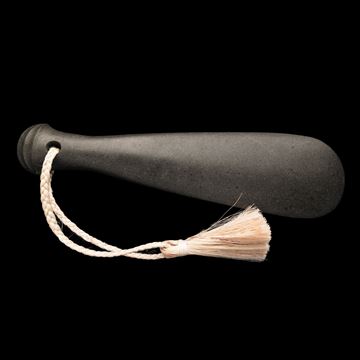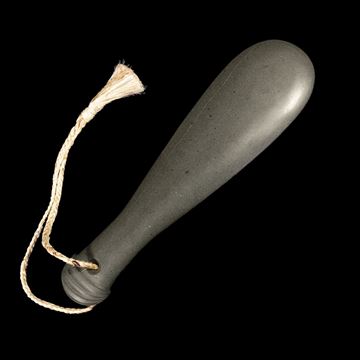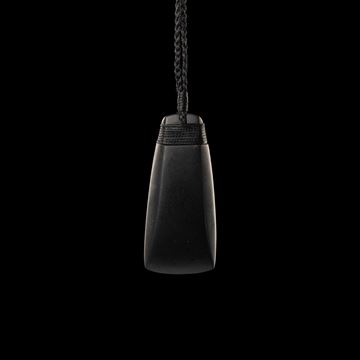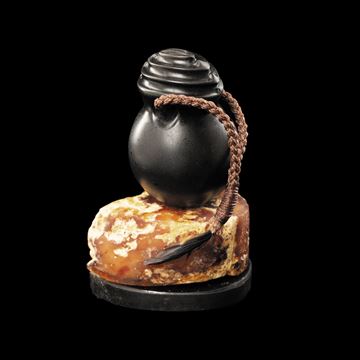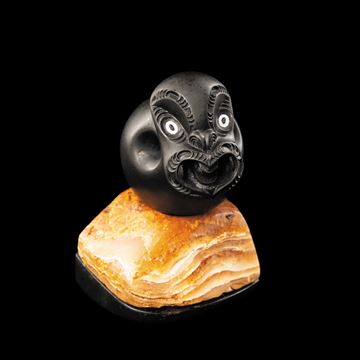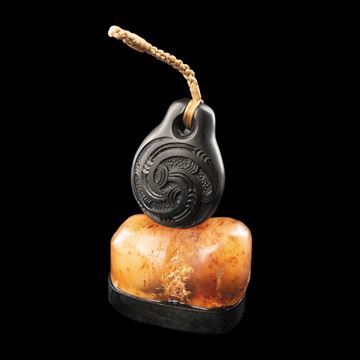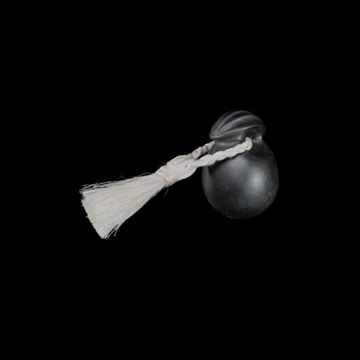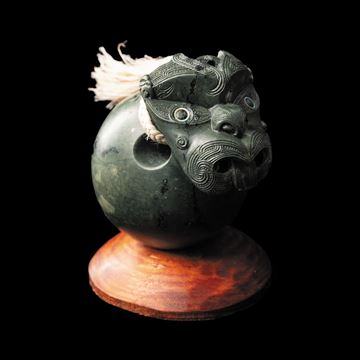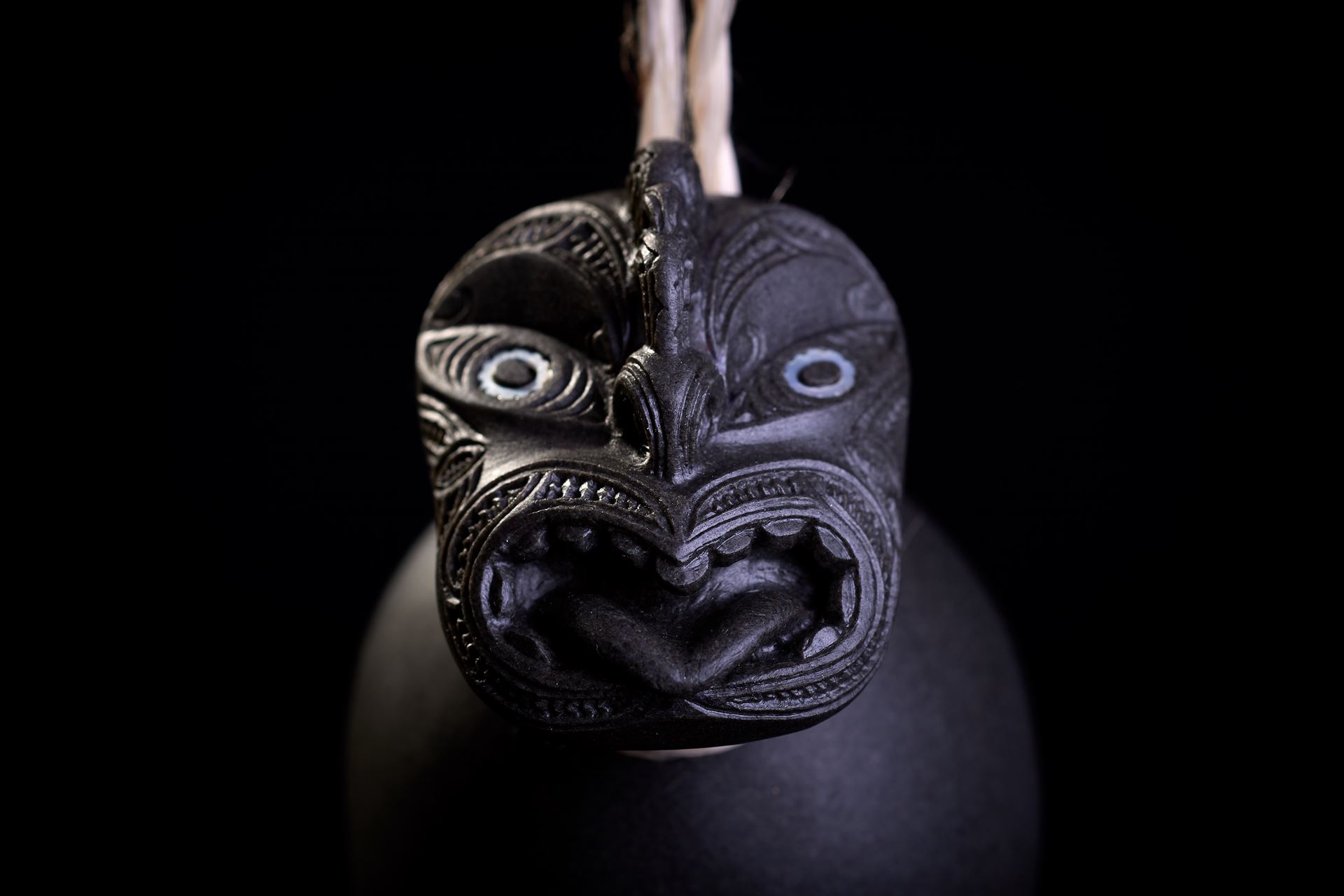
Kōhatu - Stone
At Te Takapū, students learn the revered tradition of carving pounamu (Nephrite-Jade/Greenstone), bone and stone. This tohu (qualification) is for two years and is approximately 40 hours per week, 47 weeks of the year.
Would you like soemthing custom made especially for you? Commission a piece here
Patu Onewa - 5461MA
Patu (meaning to strike or hit) were typically fashioned from native hardwood, whalebone or stone, including our highly valued pounamu (greenstone). Patu were often sharp at their forward edge and were used with thrusting, jabbing and swinging blows.
Māori weapons are notable for their fine sculptural form and were designed for close hand-to-hand combat. No other stone-age war implements surpassed them in deadly effectiveness.
Material: Onewa (NZ Greywacke)
Measurements: 370mm x 96mm x 45mm
$1,300.00
Patu Onewa - 6721PD
Patu (meaning to strike or hit) were typically fashioned from native hardwood, whalebone or stone, including our highly valued pounamu (greenstone). Patu were often sharp at their forward edge and were used with thrusting, jabbing and swinging blows.
Māori weapons are notable for their fine sculptural form and were designed for close hand-to-hand combat. No other stone-age war implements surpassed them in deadly effectiveness.
Material: Onewa (NZ Greywacke)
Measurements: 380mm x 100mm
$2,190.00
Wheku - 6346HW
In Māori carving there are three predominant designs for heads: the 'wheku' with its long eyes; the 'koruru' with its round eyes; and, the 'ruru', which also has round eyes but with a point at the top.
The different designs were used by carvers to illustrate the character of the subject they were carving. The long eyes of the wheku were often used to depict a squint or frown. Material: Pakohe (Argilite) Measurements: 48mm x 37mm
The different designs were used by carvers to illustrate the character of the subject they were carving. The long eyes of the wheku were often used to depict a squint or frown. Material: Pakohe (Argilite) Measurements: 48mm x 37mm
$750.00
Wheku - 6347HW
In Māori carving there are three predominant designs for heads: the 'wheku' with its long eyes; the 'koruru' with its round eyes; and, the 'ruru', which also has round eyes but with a point at the top.
The different designs were used by carvers to illustrate the character of the subject they were carving. The long eyes of the wheku were often used to depict a squint or frown. Material: Pakohe (Argilite) Measurements: 59mm x 48mm
The different designs were used by carvers to illustrate the character of the subject they were carving. The long eyes of the wheku were often used to depict a squint or frown. Material: Pakohe (Argilite) Measurements: 59mm x 48mm
$750.00
Toki - 5521IA
The toki pendent is based on the form of the carving chisel used in whakairo (Māori carving).
Material: Punakitere
Measurements: 63mm x 22mm x 7mm
$390.00
Toki - 5523IA
The toki pendent is based on the form of the carving chisel used in whakairo (Māori carving).
Material: Onewa (NZ Greywacke)
Measurements: 53mm x 11mm x 7mm
$320.00
Māhē - 4455IA
Māhē are sinker stones used to weigh down fishing nets.
Material: Otaua
Measurements: 42mm x 42mm x 61mm
$650.00
Māhē - 4456IA
Māhē are sinker stones used to weigh down fishing nets.
Material: Otaua
Measurements: 53mm x 31mm x 72mm
$850.00
Māhē - 4457IA
Māhē are sinker stones used to weigh down fishing nets.
Material: Otaua
Measurements: 42mm x 42mm x 56mm
$1,250.00
Māhē - 4501HW
Māhē are sinker stones used to weigh down fishing nets.
Material: Otaua (Greywacke)
Measurements: 50mm x 37mm x 35mm
$490.00
Māhē - 4503HW
Māhē are sinker stones used to weigh down fishing nets.
Material: Otaua
Measurements: 70mm X 50mm x 50mm
$1,250.00
Māhē - 4504MA
Māhē are sinker stones used to weigh down fishing nets.
Material: Waiarohia Pakohe
Measurements: 80mm x 57mm x 58mm
$1,450.00
- 1
- 2

